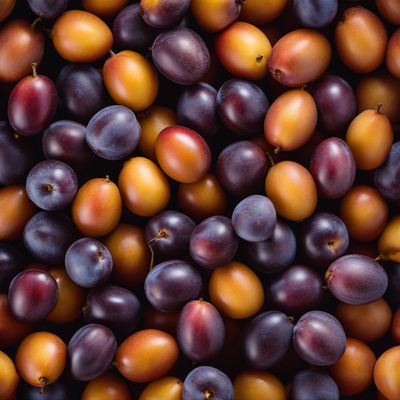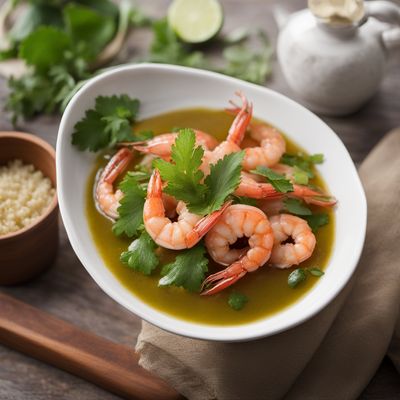
Ingredient
Jambuls
The Purple Powerhouse: Unveiling the Secrets of Jambuls
Jambuls are small, round fruits with a deep purple to black color when ripe. They have a thin, edible skin and a juicy, sweet-tart flesh. The texture of jambuls is similar to that of grapes, with small seeds embedded within the flesh. These fruits are known for their vibrant color and are often used in both sweet and savory dishes.
Origins and history
Jambuls are native to the Indian subcontinent and have been cultivated for centuries. They hold cultural significance in various Indian festivals and are often associated with good luck and prosperity. Jambuls are also found in other parts of Asia, including Indonesia and the Philippines.
Nutritional information
Jambuls are a good source of vitamins A and C, as well as dietary fiber. They are low in calories, with approximately 60 calories per 100 grams, making them a healthy addition to any diet.
Allergens
There are no known allergens associated with jambuls.
How to select
When selecting jambuls, look for fruits that are plump, firm, and evenly colored. Avoid fruits that are overly soft or have blemishes. The skin should be smooth and free from wrinkles or mold.
Storage recommendations
Jambuls are best consumed fresh, but if you need to store them, place them in a perforated bag in the refrigerator. They can last for up to 3-4 days. Avoid washing the fruits until you are ready to use them to prevent spoilage.
How to produce
Jambul trees can be grown from seeds or propagated through grafting. They require a warm climate and well-drained soil. With proper care and maintenance, jambul trees can bear fruit within 3-5 years.
Preparation tips
To enjoy jambuls, simply rinse them under cold water and remove any stems or leaves. They can be eaten raw as a snack, added to fruit salads, or used in jams, jellies, and desserts. Jambuls can also be cooked down into a sauce or syrup to enhance the flavor of savory dishes like curries or chutneys.
Culinary uses
Jambuls are commonly used in Indian cuisine to make jams, jellies, and desserts like pies and tarts. They can also be used to make refreshing beverages, such as juices or smoothies. In savory dishes, jambuls can be incorporated into chutneys, sauces, or marinades to add a unique tangy-sweet flavor.
Availability
Jambuls are commonly available in India and other parts of Asia where they are cultivated. They can also be found in specialty grocery stores or Asian markets in other regions.
More ingredients from this category » Browse all

Grumichamas
The Exotic Brazilian Berry

Surinam cherries
Exotic Tangy Gems

Sea grapes
The Ocean's Delicacy: Sea Grapes

Java apples
The Tropical Crunch

Water berries
"The Refreshing Gems: Exploring the World of Water Berries"

Carandas
The Tangy Jewel of the Tropics

Water pears
The Refreshing Delight: Exploring the World of Water Pears

Coco plums
The Tropical Delight

Hog plums
The Tangy Delight

Acerolas
Vibrant Superfood Berries

Otaheite gooseberries
The Tropical Delight: Otaheite Gooseberries

Water apples
The Refreshing Delight: Exploring the World of Water Apples
